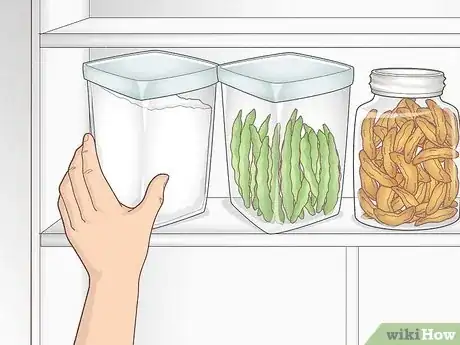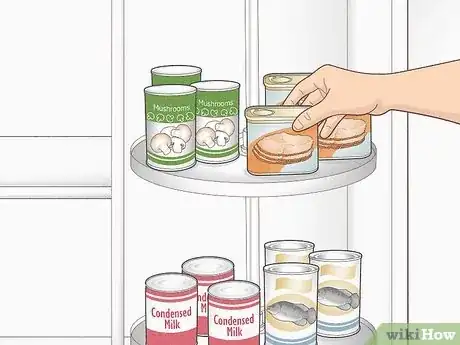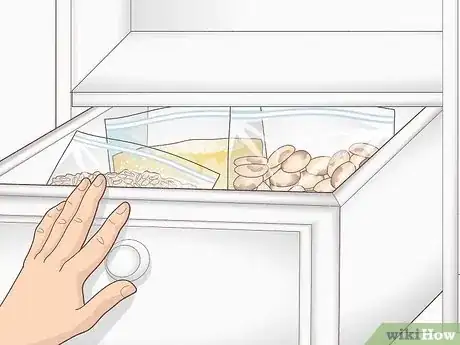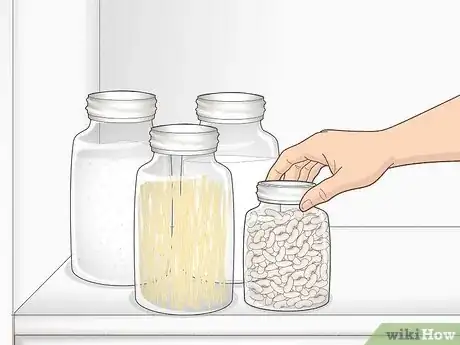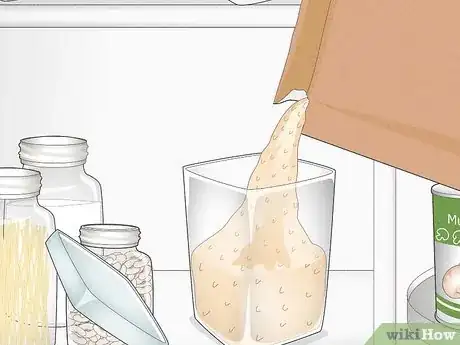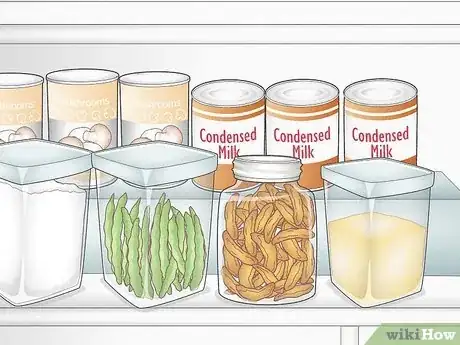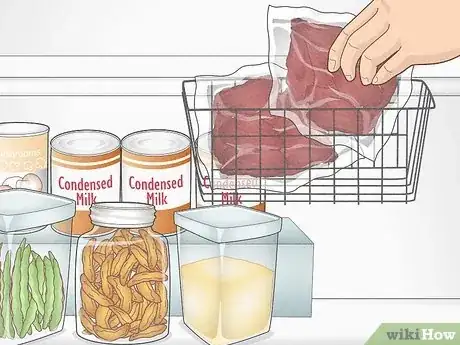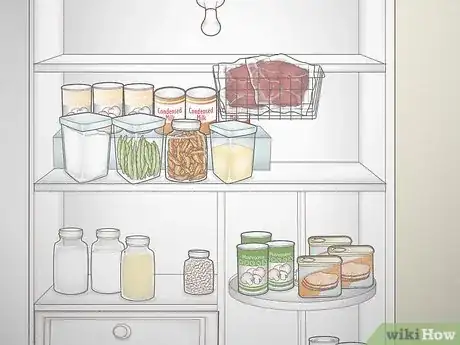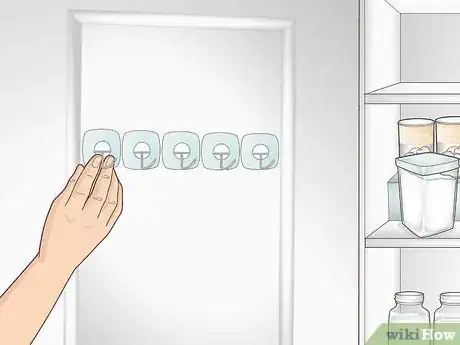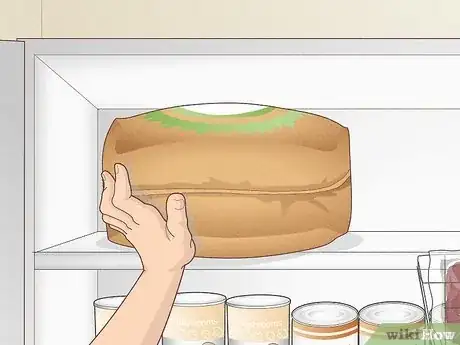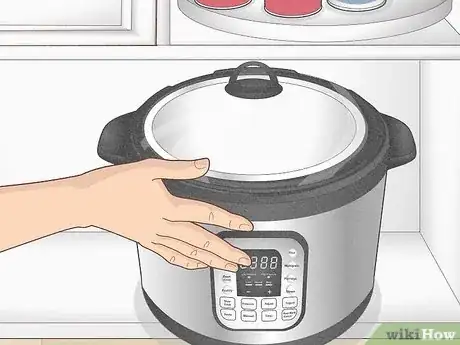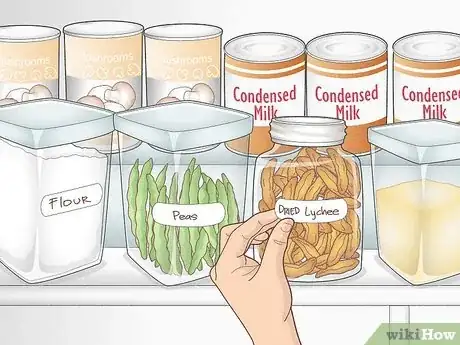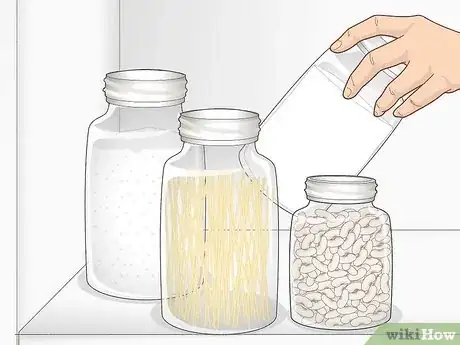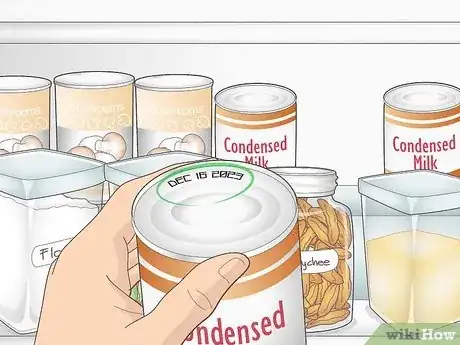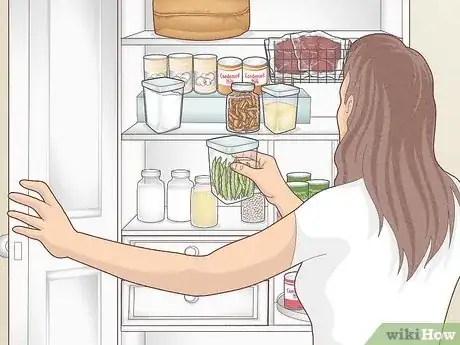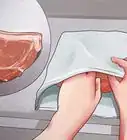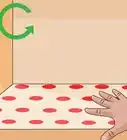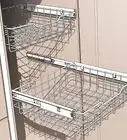This article was co-authored by Angelica Savard and by wikiHow staff writer, Jessica Gibson. Angelica Savard is a Home Stager, Realtor, and Interior Designer based in Long Beach, California. She is also the Co-owner of Elegant Domain Interiors LLC, a business that offers design consulting, home staging, and window treatments. She has over 15 years of interior design and consulting experience. She earned a BA from California State University Long Beach with an emphasis on Interior Architectural Design.
There are 10 references cited in this article, which can be found at the bottom of the page.
This article has been viewed 4,370 times.
If you can't find things or food tumbles off the shelves, it's time to organize your small pantry. You might feel stuck if your pantry doesn't have much room for storage. After all, packaging takes up a lot of space, and if you crowd the shelves, you can't find what you're looking for. We're here to help! Keep reading for great ways to turn a small pantry into a useful storage space.
Things You Should Know
- Add lazy susans or risers to the shelves in order to maximize your pantry's storage space.
- Use clear containers so you can see what you're storing. Don't forget to label them, too!
- Place bulk items on the uppermost shelves and put heavy items or appliances down low.
Steps
Place plastic bins or metal baskets on the shelves.
-
Stock up on clear containers so you can easily see what you're storing. Baskets are great for holding small ingredients or tools that might spill out onto the pantry shelves. Choose clear containers so you don't have to pull the bins out every time to see what's inside.[1] X Research source
- Put the items vertically into the baskets or containers so you can easily pull out what you need without having to dig.
Use lazy susans for canned goods or spices.
-
A sturdy lazy susan maximizes shelf space, especially in tight corners. The corners of a pantry can be really difficult—you want to use the space, but everything tends to get pushed into the very back. To solve this problem, set a lazy susan in the corner. Then, fill it with spice bottles, tiny jars, or cans and spin the lazy susan to get what you're looking for.[2] X Research source
- To prevent items from sliding off of the lazy susan, purchase a lazy susan that has a silicone padded grip.
Install pull-out shelves and drawers.
-
Replace standard shelves so you can reach deep into the pantry. Many small pantries are tiny, but they extend deep into the wall, which can make it hard to reach items. Instead of leaving standard shelves in the space, replace them with pull-out shelves and drawers.[3] X Research source
- Measure your pantry space before you head to the hardware store so you know what size pull-out storage you need.
Group similar items into zones.
-
Storing ingredients by group makes it easier to find what you need. Consider dedicating a shelf to certain types of food like canned goods, pastas, etc., or by meal type. For instance, group baking ingredients, dinner ingredients, and snacks on their own shelves.[4] X Research source
- Some people like to group food into zones based on flavor type. For example, put ingredients you use for Mexican food on 1 shelf and place ingredients for Italian meals on another.
Get rid of bulky packaging.
-
Transfer ingredients to square containers to save space. Boxes and bags of food can take up valuable space in your pantry. You may be surprised at how much room you can make by taking food out of the packaging and storing it in airtight square containers. Do this for items like cereal, crackers, and cookies.[5] X Research source
- It's fine to use round storage containers, but you won't be able to fit as many of them on your pantry shelves.
Make use of vertical space in your pantry.
-
Place risers on your shelves to store cans or jars. It's easy to load up your shelves with canned goods or items, but then you can't see what you've got at the back! To solve this problem, place shelf risers in your pantry. These look like small staircases that you can place items on.[6] X Research source
- You can also buy expandable cabinet shelves to place over items. For instance, if you have a small appliance like a hand mixer on a shelf, set an expandable cabinet shelf over it so you can store items like bowls or beater attachments on it.
Hang baskets from tall shelves.
-
Install wire or metal baskets in the pantry to store loose items. If you have an open pantry without a door, hang baskets from the ceiling, or install them to hang from the topmost shelves. Then, fill your baskets with loose items like root vegetables, fruit, or small bags of snacks.[7] X Research source
- Wire or metal baskets are handy since you can see through them to know exactly what you're storing.
Install lighting if the pantry is dark.
-
Add lighting so you can see what you're storing. Small pantries tend to be dark since they're cramped and tucked away. Install a hanging pendant light for overall brightness, or stick battery-operated puck lights underneath shelving for soft lighting.[8] X Research source
- For something more whimsical, place twinkle lights along the shelves. This gives your pantry a soft glow.
Use the space behind the door.
-
Hang hooks or a pantry pocket organizer on the door for extra storage. The door is a fantastic spot to hang small items and ingredients like spice jars. If you prefer to store larger items, install hooks or shelving to the back of the door. Metal shelving is great for storing freezer bags in an easy-to-reach spot.[9] X Research source
- If you don't want to use hardware to hang hooks or shelves, use command strips.
Store bulk items at the top of your pantry.
-
Put bulk items up high so they don't take up prime pantry real estate. Most pantries have lots of dead space up high where it's hard to get to items. Place big containers of bulk food up there so you can replenish the lower pantry shelves as you run out.[10] X Research source
- For example, keep your big packages of baking staples up high and decant them into smaller containers on your pantry shelves whenever you're running low.
Place heavy items at the bottom of the pantry.
-
Tuck appliances that you rarely use down low so they don't fall. Store heavy things that you don't use every day down there, too—think waffle irons, pressure cookers, slow cookers, or big mixers.[11] X Research source
- If you don't want to set the items directly on the floor, place them inside a crate that's got wheels on it. This way you can roll the heavy item out from the bottom of the pantry.
- Try not to store your appliances on the countertop—they take up prime real estate.
Label the containers in your pantry.
-
Use a label maker or write on the containers so you know what goes where. Even if you're using clear storage, it helps to label the individual containers. This way, if you run out of an item, you know what to restock.[12] X Research source
- If you don't want to print labels and stick them on the containers, paint the sides with chalkboard paint. Then, you can write on the containers with chalk and wipe them off easily.
Remove old or unwanted items.
-
Take everything out of your pantry to see what you're working with. If you're like most people, you probably have items that you haven't seen since you put them in the pantry! Take everything out and throw away expired food or items you know you're never going to use.[13] X Research source
- For instance, you might have bought a specific ingredient for a recipe that you decided not to make. If the ingredient is just hanging out in the pantry, taking up space, throw it out.
Ensure that food doesn't expire before you get to it.
-
Follow the first in first out method when stocking the pantry. This means that when you put food into the pantry, you stick it in the back so you use the food that's already in there first. Rotating your food means you won't throw away expired food anymore and your pantry stays organized—a win-win![14] X Research source
- If you take food out of its packaging, be sure to write the expiration date on the item. This might mean you write it on the back that you store in a bin or that you write it on the label of the pantry container.
Dedicate the small pantry for day-to-day use.
-
Store rarely-used ingredients and tools somewhere else. If you're really tight on space, plan on just using the pantry to make everyday cooking easier. This means using it to store ingredients that you'll cook with throughout the week along with tools that you use in your kitchen every day.[15] X Research source
- Put ingredients or items that you don't use as often in another spot like a cabinet in your kitchen or a pantry in another room.
You Might Also Like
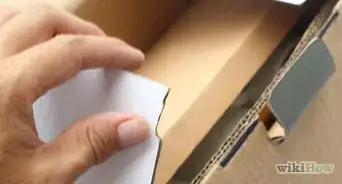
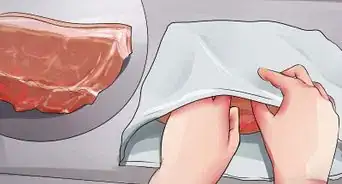
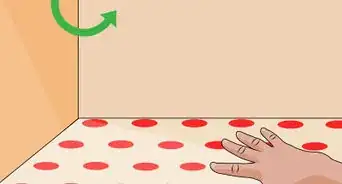
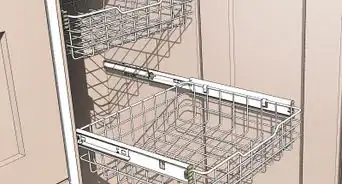
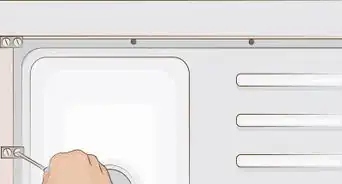
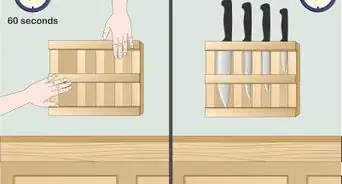
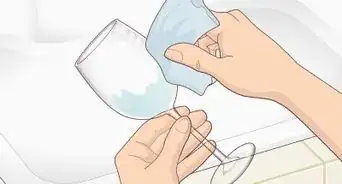
References
- ↑ https://www.apartmenttherapy.com/10-ways-to-squeeze-a-little-extra-storage-out-of-a-small-pantry-215616
- ↑ https://www.apartmenttherapy.com/best-pantry-organizing-ideas-36929712
- ↑ https://www.thisoldhouse.com/kitchens/21018123/12-genius-items-for-an-organized-pantry
- ↑ https://www.suburbansimplicity.com/how-to-organize-a-pantry-the-right-way/
- ↑ https://www.apartmenttherapy.com/best-pantry-organizing-ideas-36929712
- ↑ https://www.apartmenttherapy.com/best-pantry-organizing-ideas-36929712
- ↑ https://www.apartmenttherapy.com/diy-kitchen-pantry-32982214
- ↑ https://www.thisoldhouse.com/kitchens/21019188/read-this-before-you-put-in-a-pantry
- ↑ https://www.thekitchn.com/the-pantry-storage-spot-youre-probably-not-using-249705
- ↑ https://www.bobvila.com/slideshow/storage-sanity-15-ways-to-organize-a-pantry-47165
- ↑ https://www.homesandgardens.com/kitchens/how-to-organize-deep-pantry-shelves
- ↑ https://www.thisoldhouse.com/kitchens/22866983/pantry-organization-tips
- ↑ https://www.homesandgardens.com/kitchens/how-to-organize-deep-pantry-shelves
- ↑ https://www.homesandgardens.com/kitchens/how-to-organize-deep-pantry-shelves
- ↑ https://www.thisoldhouse.com/kitchens/22866983/pantry-organization-tips
- ↑ https://www.thisoldhouse.com/kitchens/22866983/pantry-organization-tips
About This Article

